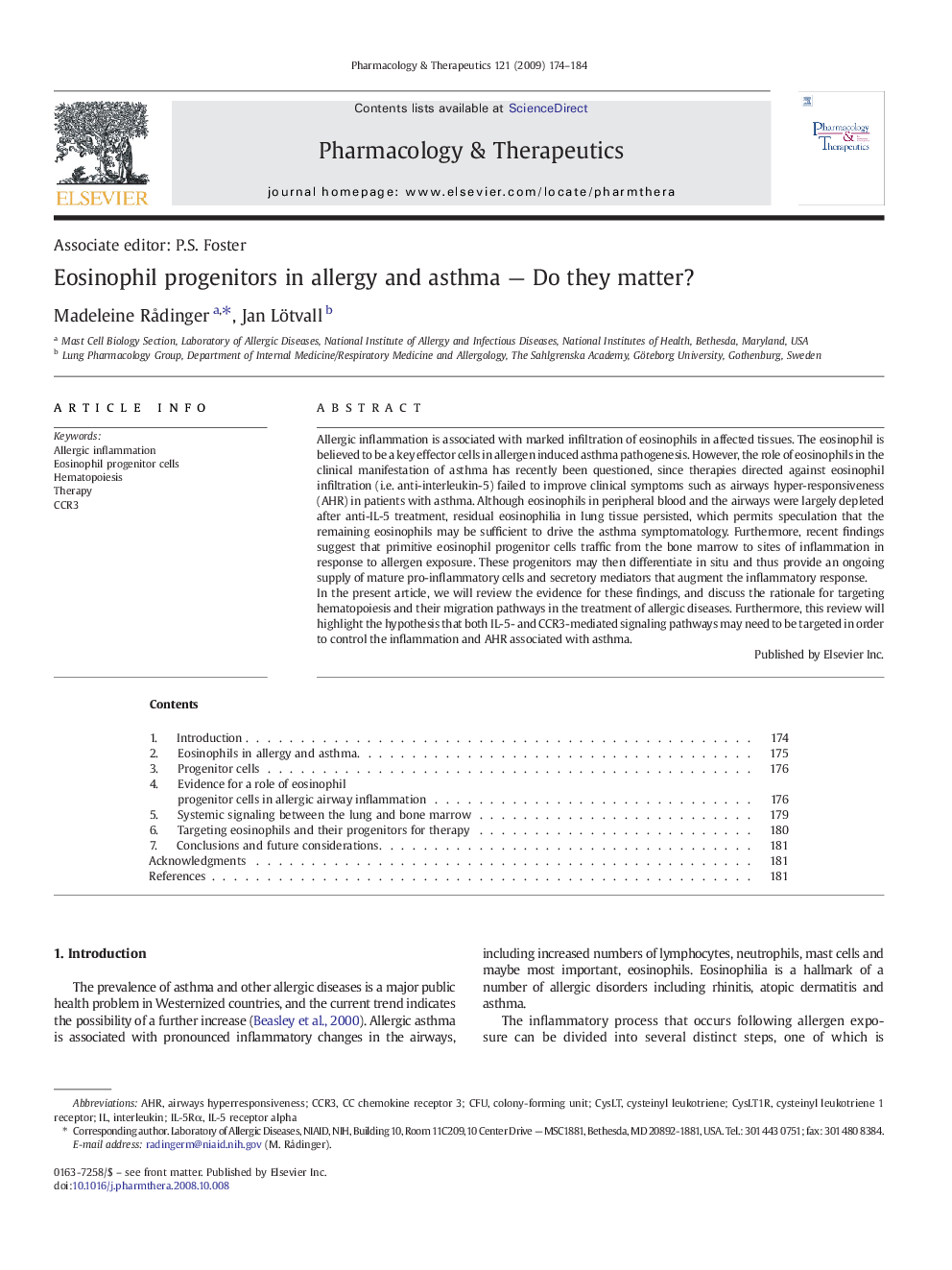| کد مقاله | کد نشریه | سال انتشار | مقاله انگلیسی | نسخه تمام متن |
|---|---|---|---|---|
| 2563721 | 1127557 | 2009 | 11 صفحه PDF | دانلود رایگان |

Allergic inflammation is associated with marked infiltration of eosinophils in affected tissues. The eosinophil is believed to be a key effector cells in allergen induced asthma pathogenesis. However, the role of eosinophils in the clinical manifestation of asthma has recently been questioned, since therapies directed against eosinophil infiltration (i.e. anti-interleukin-5) failed to improve clinical symptoms such as airways hyper-responsiveness (AHR) in patients with asthma. Although eosinophils in peripheral blood and the airways were largely depleted after anti-IL-5 treatment, residual eosinophilia in lung tissue persisted, which permits speculation that the remaining eosinophils may be sufficient to drive the asthma symptomatology. Furthermore, recent findings suggest that primitive eosinophil progenitor cells traffic from the bone marrow to sites of inflammation in response to allergen exposure. These progenitors may then differentiate in situ and thus provide an ongoing supply of mature pro-inflammatory cells and secretory mediators that augment the inflammatory response.In the present article, we will review the evidence for these findings, and discuss the rationale for targeting hematopoiesis and their migration pathways in the treatment of allergic diseases. Furthermore, this review will highlight the hypothesis that both IL-5- and CCR3-mediated signaling pathways may need to be targeted in order to control the inflammation and AHR associated with asthma.
Journal: Pharmacology & Therapeutics - Volume 121, Issue 2, February 2009, Pages 174–184